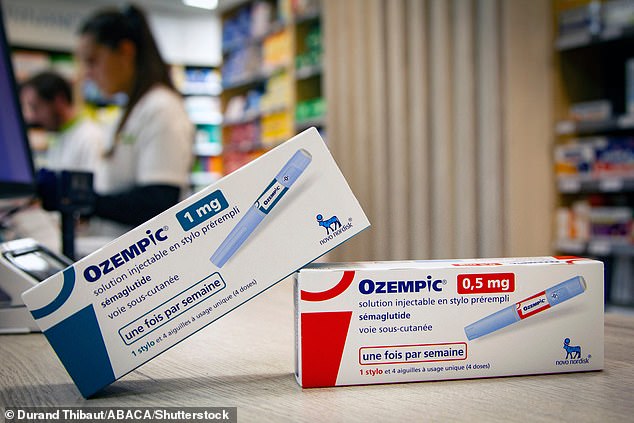Poison centers see 1,500% increase in overdoses involving weight-loss drugs like Ozempic – including man who took 10-TIMES the safe dose
Overdoses with Ozempic and other slimming injections have increased fifteen times over the past five years, figures show.
The US Poison Centers say they fielded nearly 3,000 calls related to the drugs between January and November this year – compared to just 196 in 2019.
The cases included a man in New Mexico who took 10 times the recommended amount as a first dose.
Most of the calls involved compounded or pharmacy-made versions of the drug, officials said, and not the manufactured product.
The graph above shows how the number of calls to US poison centers over Ozempic has skyrocketed. In most cases, individuals had overdosed on the drug
It was not clear how many patients who called the centers were hospitalized or died because of their problem.
People who overdose on the drug may experience severe nausea, diarrhea, abdominal pain, and constipation.
In severe cases, patients may also experience seizures or stomach paralysis.
Most of the patients who called after overdosing on the drug were in their 60s, the poison centers said — although the patients were between 40 and 70 years old.
In 94 percent of the cases recorded by the poison centers, semaglutide was the only drug reported on the call.

Officials blamed the problem on compounded or pharmacy-made versions of the drug, which they said often made it easier for people to overdose.
Among the patients who overdosed was a 50-year-old man in New Mexico who gave himself 50 units instead of five as his first dose of the weight-loss drug. He vomited for two days and suffered from nausea for a week.
Within a second, it was reported in Missouri, a patient accidentally turned the pen all the way up and gave himself an entire month's worth of doses at once.
Dr. Kait Brown, the poison center's clinical director, said CNN: 'Often it is someone who has accidentally taken a double dose, or taken the wrong dose.'
It's difficult to overdose with the official Ozempic pens, made by the Danish company Novo Nordisk, because users must set the pen to a dose and then click to inject themselves.
This helps prevent accidental overdoses, although patients can still set the pens too high.
But compounded versions made by pharmacies are often dispensed in glass vials, with patients then asked to fill syringes themselves.
This makes it “easy” to overdose, said Dr. Joseph Lambson, director of the New Mexico Poison and Drug Information Center.
“This is where we see a lot of mistakes,” he said. 'They end up drawing too much.'
“I think when we have to rely on a patient to determine what the correct dose is, set it up and then administer it, you increase the likelihood of errors occurring.”
A spokesperson for Novo Nordisk said: 'We take multiple steps to ensure responsible use of our semaglutide medicines, which are detailed at semaglutide.com.'
Ozempic first hit the market in 2017 as a drug to help patients control their diabetes by suppressing appetite.
Wegovy, which uses the same drug but in a slightly higher dose, was given the green light for weight loss management in 2021.
Popularized by celebrities like Chelsea Handler and Elon Musk, demand for the drug then increased – faster than the manufacturer could keep up.
Data showed that in 2019 there were 230,000 prescriptions for Ozempic, Wegovy and other weight loss drugs such as Mounjaro and Rybelsus.
But by the year 2022, this had risen to more than five million, according to data from Komodo Health.
The shortages allowed pharmacies to start making their own versions of the drug, called compounding, to distribute to patients.
But this has led to alerts from the FDA, warning that they are seeing unapproved doses of the drug and semaglutide salts – which are not approved for use in the drug.
America's Poison Centers operate 55 centers across the country, staffed by doctors who help people who have been poisoned.
This usually concerns children who have swallowed cosmetic products, tranquilizers or objects such as small plastic toys.
